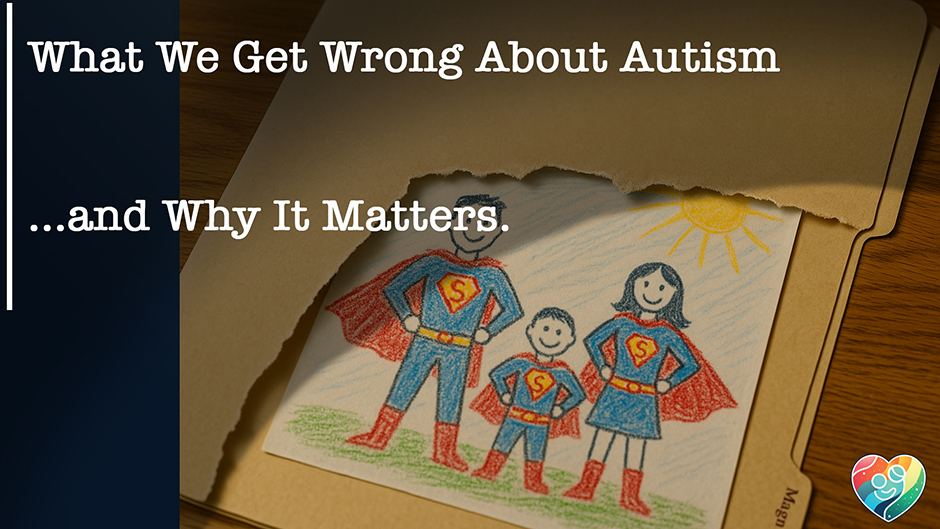
What We Get Wrong About Autism — and Why It Matters
How misinformation — and the word “cure” — distort what autism really is.
There’s a growing conversation around autism today — but not all of it is helpful. In fact, some of it quietly does more harm than good.
Misinformation about what autism is (and isn’t) spreads confusion, fear, and missed opportunities — not just for families living this experience, but for everyone who cares about inclusion, understanding, and human dignity. One of the biggest problems? The way we still hear words like “cure” used in conversations about autism. When we talk about “curing” autism, we unintentionally send a message:
That being autistic is wrong. That their differences are a disease. That their existence is a problem to solve.
But autism isn’t a disease. It’s not a defect. It’s a difference in how the brain processes information, feels emotions, engages with the world, and connects to others.
A Simple Way to Think About It
Imagine if someone said we need to “cure” people with blonde hair. Or that we need to figure out why there’s suddenly an “epidemic” of brown-eyed children. It sounds ridiculous, right?
That’s because those traits are natural variations in humanity — just like autism. They come from genetics, biology, and the incredible diversity of how human beings are wired. Autism isn’t something you catch. It isn’t something you caused. And it isn’t something you can “fix” — because it’s not brokenness in the first place.
So Where Does Autism Come From?
Here’s what science — real, evidence-based science — tells us:
- Genetics play the biggest role.
- Environmental factors during pregnancy matter too — but not vaccines.
- Autism begins before birth.
Vaccines are not a cause.
Parenting style is not a cause.
Modern technology is not a cause.
Why Are We Seeing More Cases of Autism?
This is a question we hear all the time — and it’s a good one. Here’s the simple answer:
We’ve gotten better at recognizing it.
In past generations, many autistic individuals were misdiagnosed, misunderstood, or overlooked completely. Autism is a spectrum, meaning it includes a wide range of needs, communication styles, and abilities — and now, we’re better equipped to identify all parts of that spectrum. Expanded diagnostic criteria, greater awareness among parents and doctors, and better early screening have all contributed to more accurate identification. It’s not that autism is “spreading” like some hidden force. It’s that we’re finally seeing — and naming — what was always there. And that’s a good thing. Because recognition is the first step toward support.
Early Diagnosis: Why It Matters
The earlier autism is diagnosed, the sooner families can access therapies, resources, and tools that can change the trajectory of a child’s life. Early intervention programs help children:
- Build communication skills
- Improve emotional regulation
- Develop social relationships
- Strengthen daily living skills
Through learning, therapy, and practice — essentially training and strengthening pathways in the brain — we can reduce the impact autism has on day-to-day life and increase the odds of greater independence as they grow older. It’s not about changing who they are. It’s about giving them the skills and support to live life on their terms.
The Bigger Truth
At the end of the day, autism isn’t a mistake to be erased — it’s a difference to be understood. When we stop chasing cures and start embracing support, we give autistic individuals what they really need:
A chance to thrive, to be seen, and to belong exactly as they are.
And that’s something no headline, no myth, and no misinformation can take away.




